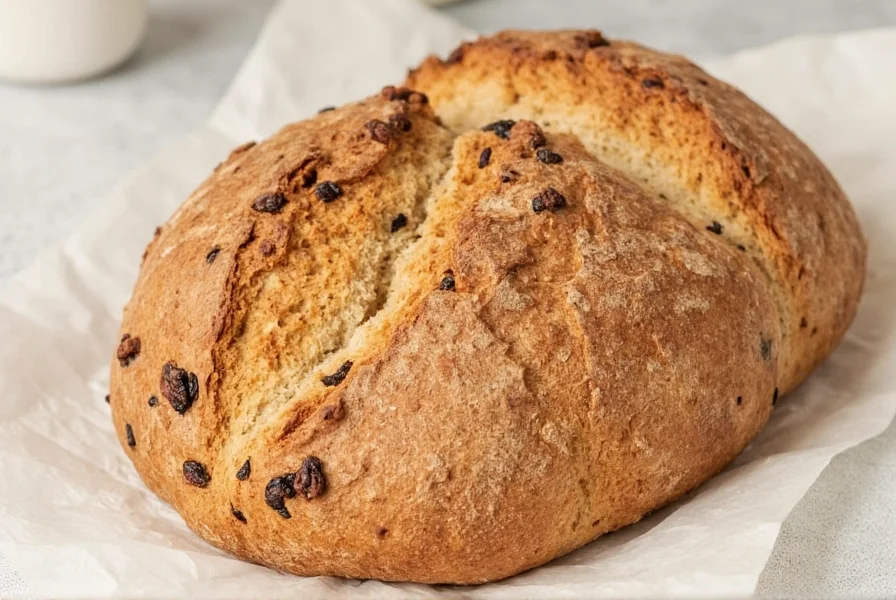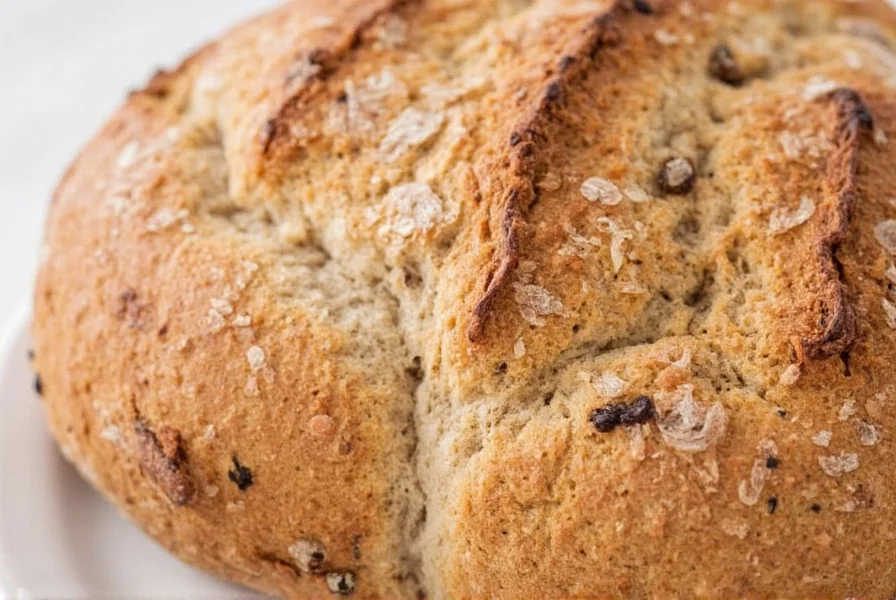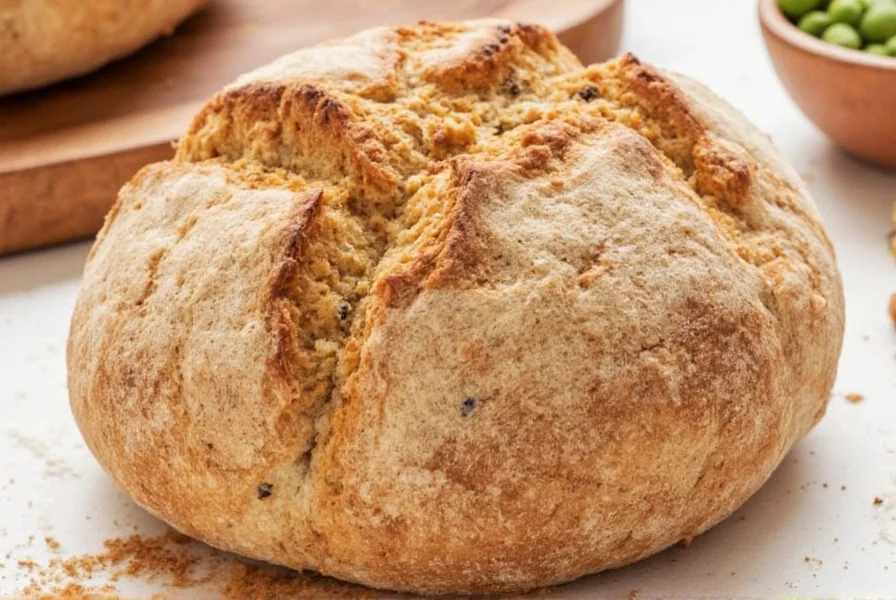Cinnamon raisin sourdough delivers a sophisticated twist on traditional sourdough bread, merging the deep, complex flavors of natural fermentation with the comforting warmth of cinnamon and the sweet bursts of plump raisins. Unlike commercial versions loaded with sugar and preservatives, authentic cinnamon raisin sourdough relies on the natural sweetness of properly hydrated raisins and just enough cinnamon to enhance—not overpower—the bread's characteristic tang. This guide provides the precise ratios, timing, and technique needed to achieve bakery-quality results at home, addressing common pitfalls like uneven spice distribution and collapsed loaves.
The Science Behind Flavor Integration
Creating exceptional cinnamon raisin sourdough requires understanding how ingredients interact with the sourdough fermentation process. Cinnamon contains compounds that can inhibit yeast activity when added too early, while raisins introduce additional sugars that affect proofing times. The key is strategic ingredient incorporation:
| Ingredient | Optimal Timing | Impact on Fermentation |
|---|---|---|
| Cinnamon (15-20g/500g flour) | Final fold (30-45 minutes before shaping) | Minimal inhibition when added late; preserves enzymatic activity |
| Raisins (100-120g/500g flour) | Final fold, pre-soaked in warm water or tea | Added sugars accelerate final proof by 15-20 minutes |
| Sourdough starter (20-25%) | Levain creation | Maintains consistent acidity for flavor development |
Essential Ingredients and Equipment
Quality ingredients make the difference between ordinary and exceptional cinnamon raisin sourdough. For the flour, use a blend of 80% bread flour and 20% whole wheat for optimal structure with nuanced flavor. Ceylon cinnamon provides a more complex, less harsh profile than Cassia varieties—look for "true cinnamon" with its delicate, sweet aroma. Raisins should be plump and moist; golden raisins offer a brighter flavor that complements sourdough's tang better than dark varieties.

Essential equipment includes a digital scale (critical for precision), banneton for shaping, Dutch oven for baking, and a bench scraper for handling the sticky dough. A thermometer helps monitor dough temperature during bulk fermentation, which should remain between 76-78°F (24-25°C) for optimal flavor development.
Step-by-Step Baking Process
Day 1: Starter Preparation
Feed your active starter to create a levain using 20g starter, 100g water, and 100g flour. Allow to ripen for 6-8 hours until bubbly and doubled.
Day 2: Mixing and Bulk Fermentation
Combine 350g water, 500g flour blend, and ripe levain. Autolyse for 30 minutes. Add 10g salt and mix thoroughly. Perform 4 sets of stretch and folds at 30-minute intervals during the first 2 hours. After the third fold, incorporate pre-soaked raisins. After the fourth fold, add cinnamon during the final fold.
Proofing and Baking
Shape into a boule and place in a floured banneton. Refrigerate for 12-16 hours. Preheat Dutch oven to 450°F (230°C). Bake covered for 20 minutes, then uncovered at 425°F (220°C) for 25-30 minutes until internal temperature reaches 205-210°F (96-99°C).
Troubleshooting Common Issues
Dense crumb with poor rise: Often caused by adding cinnamon too early, which inhibits yeast. Solution: Incorporate cinnamon during the final fold only. Ensure your starter is vigorous—test by floating a small amount in water.
Uneven cinnamon distribution: Results from improper folding technique. Solution: Use a bench scraper to gently fold the dough over itself, rotating the bowl 90 degrees between folds to distribute ingredients evenly without deflating the dough.
Raisins sinking to bottom: Caused by insufficient gluten development or over-hydration. Solution: Increase bulk fermentation time by 30 minutes to strengthen gluten structure, and ensure raisins are patted dry after soaking.

Serving and Storage Recommendations
For optimal flavor, allow cinnamon raisin sourdough to cool completely before slicing—minimum 2 hours. The complex flavors continue developing as the bread cools. Slice with a serrated knife using a gentle sawing motion to preserve the open crumb structure.
Store cut-side down on a wooden board, covered with a clean towel. Properly made cinnamon raisin sourdough maintains freshness for 3-4 days at room temperature. For longer storage, freeze whole or sliced in an airtight container for up to 3 months. Refresh frozen slices by toasting directly from frozen.
Variations for Dietary Preferences
Lower sugar version: Reduce raisins to 75g per 500g flour and add 15g chopped walnuts for texture. The natural sweetness of properly fermented sourdough compensates for reduced fruit content.
Gluten-free adaptation: Use a blend of 300g brown rice flour, 100g tapioca starch, and 100g potato starch. Increase hydration to 80% and add 5g xanthan gum. Note that GF versions won't develop the same chewy texture but can still achieve excellent flavor.
Frequently Asked Questions
Can I use regular yeast instead of sourdough starter for cinnamon raisin bread?
While you can create a cinnamon raisin bread with commercial yeast, it won't be true sourdough. Sourdough's unique flavor comes from lactic acid bacteria in the starter that develop during fermentation. Yeast-only versions lack the complex tang and enzymatic breakdown that makes sourdough digestible. For authentic cinnamon raisin sourdough, a mature starter is essential.
Why do my raisins become hard during baking?
Raisins harden when they're not properly hydrated before incorporation. Always soak raisins in warm water, tea, or even orange juice for 15-20 minutes before adding to the dough, then pat them dry. This plumps them up and prevents them from absorbing too much moisture from the dough during baking, which would leave them tough and chewy.
How can I prevent cinnamon from making my sourdough bread collapse?
Cinnamon contains cinnamaldehyde which can inhibit yeast activity. To prevent collapse, limit cinnamon to 15-20g per 500g flour and add it during the final fold rather than at the beginning. This timing allows the gluten structure to develop fully before introducing the cinnamon. Also ensure your starter is at peak activity—bubbly and doubled in size—before mixing your dough.
What's the ideal hydration level for cinnamon raisin sourdough?
The ideal hydration for cinnamon raisin sourdough is 70-75%. This balances workability with the open crumb structure sourdough is known for. The raisins add additional moisture, so reduce your initial water content by 10-15g compared to plain sourdough. If using golden raisins, which are typically moister, aim for the lower end of this range (70%).
How long should I let cinnamon raisin sourdough cool before slicing?
Allow cinnamon raisin sourdough to cool for at least 2 hours before slicing. This crucial resting period allows the crumb structure to set completely. Cutting too soon releases trapped steam, resulting in a gummy texture. The complex flavors continue developing as the bread cools, reaching their peak around the 90-minute mark. Use a serrated knife with a gentle sawing motion for clean slices that preserve the delicate crumb.











 浙公网安备
33010002000092号
浙公网安备
33010002000092号 浙B2-20120091-4
浙B2-20120091-4